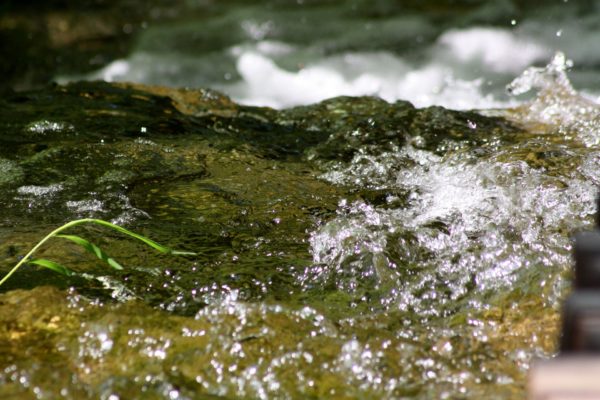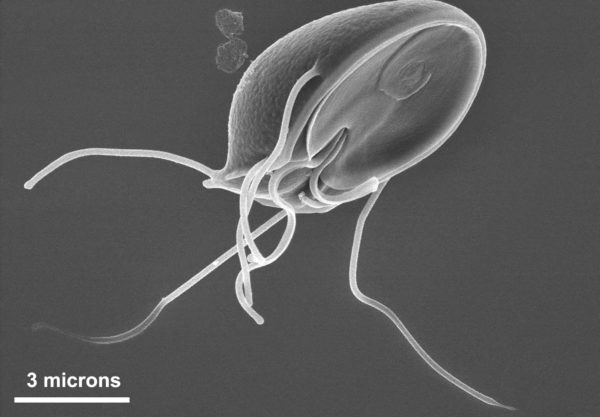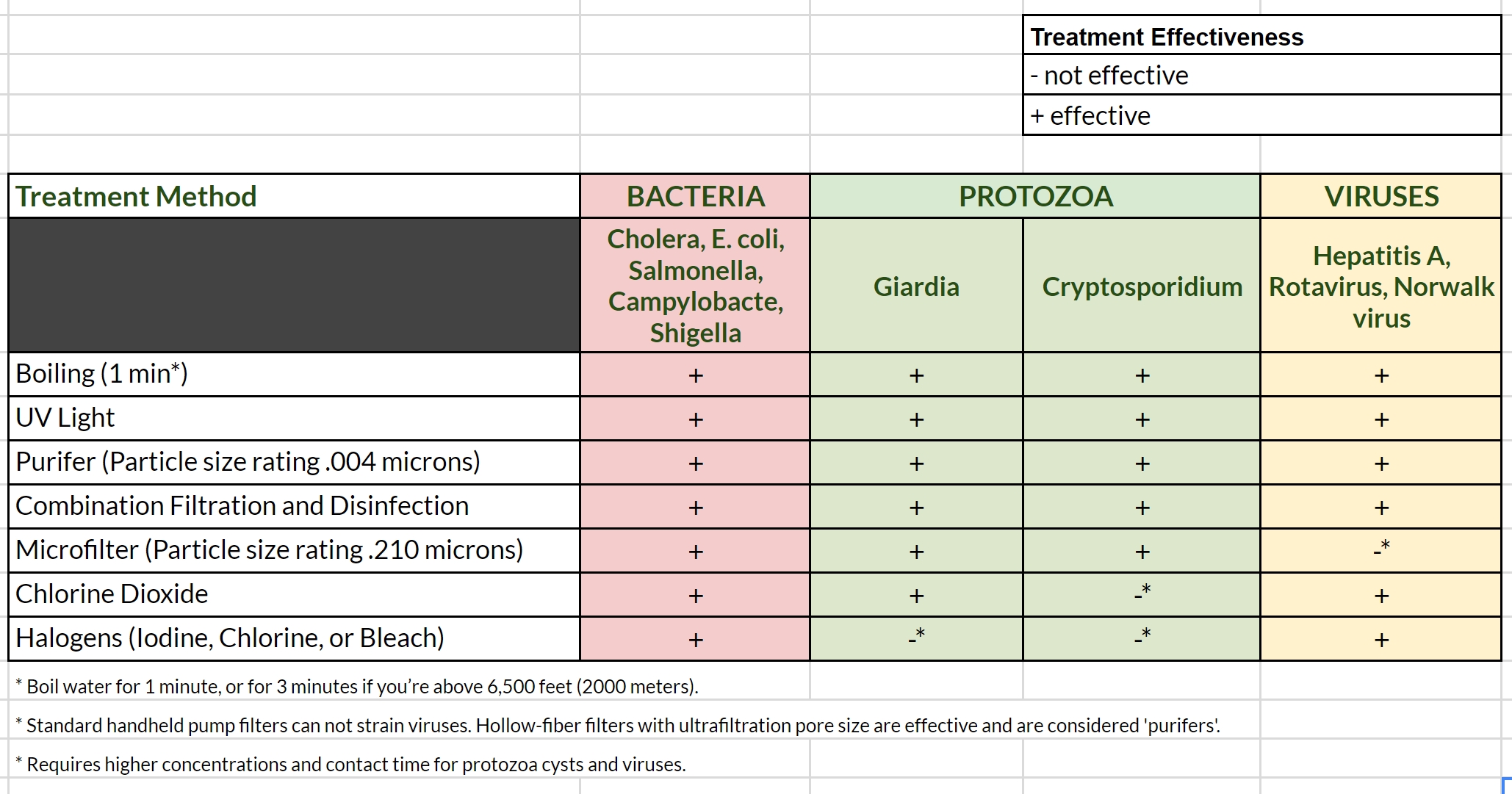That cold fast moving clear mountain spring appears pristine to the naked eye, but microscopic organisms are thriving in its water by the millions.

If ingested, some of these microorganisms can cause severe gastrointestinal infections resulting in diarrhea and vomiting. Two such common microorganisms you might encounter in wilderness waters are Giardia and Cryptosporidium.
Here we discuss why you should always treat wilderness water and the type of treatment method you should use based on your location.
Biologically Contaminated Water
Biologically contaminated water is water that contains microorganisms such as protozoa, bacteria, or viruses that can lead to gastrointestinal infections. These enter water primarily through human or animal waste.
These are the three biological pathogenic contaminants that you should be aware of and know how to treat.
1. Protozoa
Protozoans are single-celled organisms and are caused by human and animal feces. They are large in size, varying from 5-100 microns in diameter. They are easily filtered out with when using a standard backpacking water filter rated for “cyst reduction/removal” (absolute less than or equal to 1-micron filter). UV sterilization is also effective, but some protozoans, such as Cryptosporidium can be resistant to disinfecting chemicals such as iodine. The reason is that protozoa contain a hard protective shell or cyst which are more resistant to destruction by disinfection. This tough shell also allows them to withstand freezing water temperatures.
The protozoa Cryptosporidium is most famous for giving hikers bouts of crippling diarrhea. Like a parasite, it latches to the intestines and reproduces by laying eggs in fecal matter. If an infected person does not bury their feces correctly, crypto will migrate to a nearby water source and spread to a new host.
Common Protozoa: Giardia, Cryptosporidium, and Amoebae

2. Bacteria
Single-celled organisms that are medium in size, ranging from 0.1-1 micron in width. Bacteria are some of the most abundant microorganisms existing nearly everywhere on earth and in water. Bacteria may be free-living organisms or parasites which reproduce by cell division or spores. After rainfall, bacteria can multiply and increase dramatically to their millions (per milliliter) within a short period of time. Most bacteria are beneficial to us, but harmful species are introduced through human and animal fecal waste. Bacteria can be filtered out with filters that meet the requirements for bacterial removal (an absolute less than or equal to 0.3-micron filter) or can be destroyed with disinfecting chemicals, UV light, or boiling.
Common Bacteria: E.coli, Salmonella, Cholera, Campylobacter
3. Viruses
Viruses are infectious parasitic microbes and are the smallest of waterborne pathogens, ranging from 0.004 to 0.1 microns in size, which is about 100 times smaller than bacteria. Their tiny size makes it easy to pass through any handheld water filter, including microfilters. The ability of a device to remove viruses is what distinguishes it as a water “purifier” versus a “filter.” Viruses can cause deadly illnesses such as polio and hepatitis. Fortunately, viruses are rare in the United States and Canada. They are a primary concern in developing nations with poor sanitation. Ultraviolet light devices, like the SteriPEN, destroy viruses by scrambling the virus’ DNA so it can’t reproduce. Boiling is also effective. Any other device marketed as a water “purifier” will destroy viruses in addition to bacteria and protozoa.
Common viruses: Hepatitis A, Norwalk, Poliovirus, and Rotavirus
Ways to Purify Water
Except for boiling, few water treatment methods are effective in removing all pathogens. This will help you decide which is right for you.
- Handheld pump filters (depending on filter pore size) can trap protozoa and bacteria but not viruses. Viruses are rare in US wilderness waters, so filters are suitable for backpackers staying within the US and Canada. Filtration is ideal for turning dirty water into clear water and do not alter the taste. A drawback to pumps is that many are heavy (up to 1 lb), can break, or get clogged. Carry a backup.
- If viruses are a concern, follow filtration with a chemical treatment such as diluted bleach (3.5% sodium hypochlorite), iodine, or chlorine dioxide. Some filters such as the Grayl Ultralight include a proprietary “electro adsorption” filter membrane to strain viruses.
- Ultraviolet light devices, like the SteriPEN, are effective at killing bacteria, protozoa and destroying viruses. One drawback with the SteriPEN is that it does not work well with dirty water — particulates or discoloration can block UV light. If the water contains debris, strain the water with a bandana or cloth or let the sediment settle to the bottom before treatment. We like the UV device because there are no pumps to deal with and no chemicals that leave a bad taste. Because UV lamps are electronic, you should always have a backup.
- Chlorine dioxide is a better backup chemical disinfectant and takes up minimal weight. Iodine, chlorine, and bleach also serve as a good backup when your primary water purification methods fail. However, these are not good for destroying crypto. No chemicals are recommended for long-term use. Iodine is not recommended if you are pregnant or have a thyroid problem. Keep in mind that all chemical disinfectants vary significantly with temperature, pH, and turbidity of the water to be treated. Follow the instructions for the chemical disinfectant that you select. Some treatments require up to a 4-hour wait time.
- Cover up the bad taste from chemical treatment such as iodine and chlorine by adding an effervescent vitamin C tablet, such as Emergen-C. Do not add the flavor tablets until after the chemical treatment time has elapsed.
- Boiling has a very high effectiveness in killing most protozoa, bacteria, and viruses, making it a good backup treatment. Bring water to a rolling boil for 1 minute, or for 3 minutes if you’re above 6,500 feet (2000 meters). The extra fuel demand and time commitment make boiling water impractical on longer trips unless you resort to a campfire or plan to cook with it.
Choosing Cleaner Water Sources
Toxic chemicals contaminate fresh groundwater on every inhabited continent. Boiling, filtering, or chemically treating water will not remove chemical toxins. Toxic chemicals include pesticide runoffs, nitrogen fertilizers, industrial farming, industrial chemicals, heavy metals, mine tailings, and more. Toxic chemicals are commonly found in continuous waterways such as rivers.
Keep the following in mind if you have several choices of where you can gather water on the trail.
- Choose your water at higher elevations. Water sources that are located in lower elevations have the greatest chance of having pesticide runoff and other waste.
- Springs tend to offer the best source of clean water.
- Small moving streams are the next best source of clean water. Avoid stagnant water if possible.
- Rivers often contain toxic contaminants from nearby farms and industry.
- Lakes and ponds often contain contaminants especially if used for recreation. If you have no other choices, choose a small pond rather a than lake.
- Avoid drinking any water containing surface scum, foam, or algae which may contain harmful algal blooms (HABs). Cyanotoxins produced by bacteria called cyanobacteria (also known as blue-green algae) can be poisonous and potentially lethal. There is not much information on how to destroy it.
Sanitation
In addition to purifying your water by using one of the treatments mentioned above, you can also protect yourself from illness by following good personal hygiene practices:
- Bury waste 8 inches deep and at least 200 feet away from water sources. Follow up by washing hands or using hand sanitizer.
- Use hand sanitizer before handling food and eating.
Drinking untreated water is a temptation among many backpackers and other wilderness travelers. Resultantly, the most common illness among backpackers is a gastrointestinal infection caused by drinking untreated water or keeping poor hygiene. Nothing ruins a backpacking trip like trail trots. Remember, that clear water does not mean clean water! Always remember to purify your water. There is no such thing as naturally clean drinking water in the backcountry.
Article Sources:
Water Treatments: cdc.gov/healthywater/drinking/travel/backcountry_water_treatment.html
Crypto facts: nfid.org/publications/factsheets/cryptosporidium.pdf
HAB: cdc.gov/habs/publications.html
